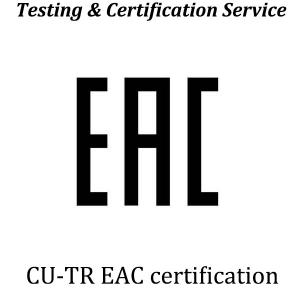

Add to Cart
Certification Introduction:
EPR is the abbreviation of an EU policy called Extended Producer’s Responsibility. In the EU, the collection and recycling of post-consumer waste from most products is managed through the Extended Producer Responsibility (EPR) system. Producers must ensure responsibility and accountability for the management of waste generated by their products at the end of their useful life by paying an “ecological contribution” fee.
EPR is actually a management system framework and is practiced by many legislations, but EPR is not the name of a regulation. The so-called EU WEEE Directive and the German Electrical Appliances Law, Packaging Law, and Battery Law are actually equivalent to the legislative practice of this system in the EU and Germany. From this point of view, German WEEE, German Packaging Law, and Battery Law all fall into the category of EPR. In addition, most European countries, not just EU member states, have always had corresponding laws and regulations to control EPR. The reason why EPR has attracted much attention recently is because Amazon forces all sellers in Germany and France to provide EPR registration numbers.
Responsibilities of different EPR entities
If you are a manufacturer of a product covered by the EPR
regulations, you need to provide Amazon with your EPR registration
number. The following are the product categories covered by French
and German EPR regulations and you must provide Amazon with the
relevant EPR registration number.
If you are a manufacturer and do not have an EPR registration
number, you will need to register to obtain one. For each EPR
product category you will need to contact the relevant Producer
Responsibility Organization (PRO) to obtain an EPR registration
number. For detailed instructions on how to register in each
country, please see the relevant sections below.
If you are not a manufacturer but sell products that are subject to
EPR regulations, you must obtain the corresponding EPR registration
numbers from your upstream suppliers and provide Amazon with the
EPR registration numbers for those products as proof of compliance.
If you are not a manufacturer and cannot obtain a valid EPR
registration number from your upstream supplier, you will need to
register and provide Amazon with your own EPR registration number.
How to complete an EPR
EPR is not complicated. You only need to provide company
information and product sales information, report data on time
(such as monthly/quarterly/yearly), and renew every year to
maintain your EPR registration number for a long time.
1. Register
2. Interpretation and reporting
3. Pay the fee
EPR and Amazon related issues
I have met my EPR obligations. Do I have to notify Amazon about
this?
Yes. If you have registered all eligible products, please provide
Amazon with your EPR registration number. In Q4 2021, Amazon will
provide a link to upload your EPR registration number.
I am a self-shipping seller. Do these rules also apply to me?
Yes. Amazon must confirm that all sellers are EPR compliant,
whether they use FBA or self-fulfill.
When do I need to take action?
Before offering products in France and/or Germany, manufacturers
must ensure that they have completed the EPR registration process
and have received EPR registration numbers for all applicable EPR
product categories.
Do I have to register in a different country and in a different EPR
product category?
Yes. Each country and EPR product category available for sale on
amazon.de and amazon.fr has different registration requirements,
processes, and authorizing authorities.
How often do I need to report my sales and pay EPR fees?
Declaration and payment of EPR fees are due monthly, quarterly or
annually - depending on the EPR category/Producer Responsibility
Organization in the respective country.
Do I need to pay for both primary packaging (product packaging) and
secondary packaging (shipping packaging)?
Primary packaging (product packaging): Yes. Both FBA sellers and
self-fulfillment sellers must pay for primary packaging.
Secondary Packaging (Transport Packaging): See the country-specific
sections for more information.
Primary packaging is the packaging that directly surrounds the
product, such as B. a shoe box or a beverage can. Secondary
packaging is the shipping box or bag used to protect the product
during transportation to the customer. This also includes padding
materials used to protect products and tape used to bundle
packaging. Shipping labels are also part of secondary packaging.
How high is the cost?
EPR registration: You must pay the registration fee to the
appropriate producer responsibility organization. Environmental
Fees: Environmental fees are calculated based on sales volume and
EPR product category and vary by country. Each PRO maintains its
own price list as agreed in the contract.
What additional steps do I need to take to become EPR compliant?
If the French EPR product category is "EEE" or "Furniture", you
will need to include the environmental charges listed on the
seller's invoice in your own invoice.
